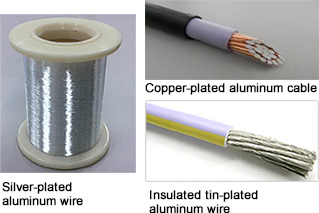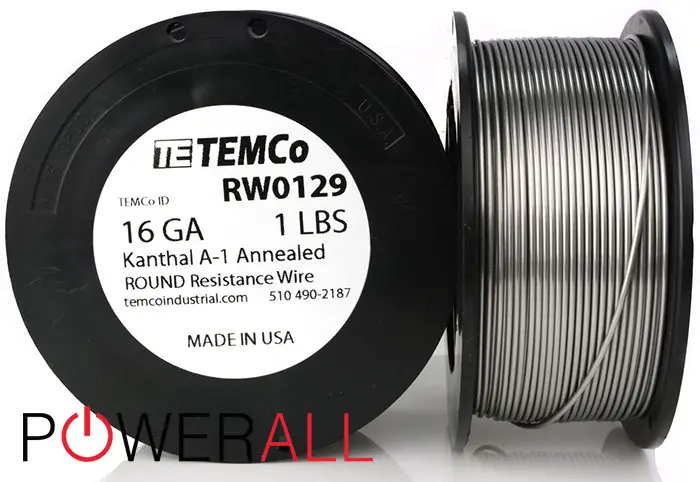When it comes to electrical wiring, selecting the correct wire size is critical to ensure safety, reliability, and optimal performance.
If you decide to go for the 16 American gauge wire (AGW), you must know the maximum safe amperage rating. So, what is the 16 AWG amp rating? All details you need about this concern are in this article.
Types Of 16 Gauge Wire
Let’s take a closer look at some of the different types of cords available, categorized according to the materials and voltage ratings!
Based On Material

- Copper wiring: This material ensures good conductivity for your 16 gauge wire that can transmit electrical energy as effectively as possible. It is also extremely durable and resilient to corrosion.
- Aluminum wiring: Aluminum wires are commonly used in construction applications, such as wiring for light fixtures or electrical outlets. Still, they are less conductive than copper ones and can be more prone to corrosion.
- Silver wiring: The material is highly conductive and is often used in high-performance audio speaker applications. However, these wires may not be necessary for most electrical applications due to their high price per foot.
Based On Voltage
You might be wondering if there are many wire kinds for various voltages while purchasing them for your electrical systems. Fortunately, all available AWG wires can be utilized without problems with any voltage rate of your choice.
This means you can use the same wire, regardless of whether it is intended for a 120-volt or 12-volt circuit. Having said that, your automotive wire’s maximum current carrying capacity can vary depending on the electric voltage rate you are utilizing.
How Many Amps Can 16 Gauge Wire Handle?
A 16 gauge cable can support 13 amps at maximum. The amps of current is inversely related to the wire’s amperage. The cable is smaller and can carry less electricity with a larger gauge wire. Moreover, the resistance to the electricity that flows across the wire improves with decreasing wire diameter size.
Notice that this American wire gauge may not convey all the theoretically anticipated current. This is because when current moves from one place to another along the wire, some of it is lost, reducing the current amount at the supply end.
Another thing to keep in mind is exceeding the maximum rated amperage for 16 gauge wire can lead to overheating, which can result in electrical fires or further dangers.
Therefore, it’s always best to consult with a qualified electrician or refer to the manufacturer’s specifications to determine the safe amperage for a given application.
Uses Of 16 Gauge Wire
Minor applications with low electrical requirements frequently use 16-gauge welding cables. Its modest current transfer also makes it suitable for basic extension cables in a household.
For instance, connecting holiday lights, TVs, fridges, electric heaters, hedge trimmers, radio devices, portable fans, lamps, and other home appliances.
Moreover, the 50-foot length of proper gauge wire, which can transport 13 amps, is available. Anywhere that needs electricity can be powered by this link, including indoor and outdoor appliances.
Once comparing specific traits, you will be able to tell the difference between a light-duty extension cord for indoor usage with a 16 gauge copper wire and one for outdoor residential wiring.
16 Gauge Wire Pros And Cons

Like any other amps wire size, it has its own set of advantages and disadvantages that are important to consider when selecting wire for a particular application. Here are some AWG wire characteristics you should keep in mind.
Pros
- Easy to work with: It is relatively easy to handle and manipulate, making it a popular choice for DIY projects and small installations.
- Affordable: Compared to thicker wire sizes, a 16 gauge one is typically less expensive, being a cost-effective option for low-voltage applications.
- Flexibility: 16 gauge electrical copper wire is available in both stranded and solid core varieties. Stranded one is more flexible and easier to bend, making it ideal for applications that require frequent movement.
- Wide availability: This is a standard size and is widely available from most electrical supply stores and online retailers.
Cons
- Limited amperage capacity: This electrical wire has a limit for carrying current capacities, which is only 13 amps.
- Voltage drop: Due to a relatively small diameter, it can cause voltage drop over long distances. This can result in reduced performance and may require the use of a voltage booster.
- Heat generation: When the electric wire is used to carry more current than it is rated for, it can generate heat and become a fire hazard.
- Limited range: Its limited capacity makes it unsuitable for high-power applications, such as large motors or industrial machinery.
Frequently Asked Questions
Is 16 Gauge Wire Good For 10 Amps?
Technically, a 16 gauge power wire can carry roughly 10 amps at 12 volts. Still, we don’t recommend going past 8 amps. This is because this sized wire may not have a uniform construction over a greater distance, resulting in potential electricity loss.
Is 16 Gauge Wire Strong?
Yes. It can be considered relatively strong for its size. Plus, in terms of durability and resistance to damage, 16 primary automotive wires can be rather strong, depending on the type of insulation and the environment in which it is used.
How Many Amps Can 16 Gauge Wire Handle At 12 Volts?
A 16 gauge wire is able to handle around 10 amps at 12 volts due to the voltage difference. As 120 volts equals 1 amp, by doing simple math, you will have 0.833 amps out of 12 volts.
The Bottom Line
By this point, most of the crucial information about the 16 gauge wire amp rating and its highest current has been discussed. Now, whether you’re utilizing it inside your home or vehicle, you now choose the solid wire easily based on the amount of electrical current you need to convey.









0 Comments